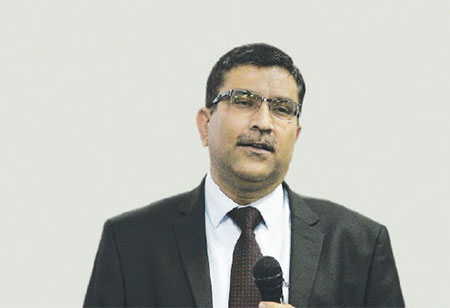Emerging Role of the Procurement Function
By Dev Arora, AVP-Procurement,
Moser Baer India

Dev Arora, AVP-Procurement, Moser Baer India
The Purchasing function has evolved a great deal since the days of Industrial Revolution. The earliest role assigned to a buyer was to buy inputs and consumables as per the Purchase Request – PR given by the Production and User departments. This was in the days when computers were not commonly available.
With the proliferation of computers in the form of desktops and laptops, came in a host of software applications in the form of ERP, Planning and SCM tools that made the whole process transparent for all of the stakeholders. The buyer could not only see what to buy, but also when to buy and also could estimate how much to buy. The ‘buyer’ thus evolved into a ‘planner’ who also happened to be a buyer.
With these new tools, the buyer was able to optimize the buying decisions. He could play on the commodity prices, bulk quantity ordering, just to ensure the lowest possible prices.
To be able to manage such ‘enabled’ buyers, the Procurement Heads needed to have an all-around view of the company’s strategy and policies. The CPO became an indispensable member of the management core team.
Gradually, we have embarked into an era where the performance of the company depends on the performance of the CPO and the Procurement team to a great extent.
Let us halt here and understand the difference between the terms “Purchasing” and “Procurement”.
Procurement function is a level above the pure Purchasing function. It involves a bit of Planning and what, why, when and how much to Purchase. Procurement function works in tandem with the Production and PPC teams.
Today, a new kind of Procurement (non-manufacturing) organization has come into being. Company’s profits get impacted by the price at which the inputs are bought. Logistics and distribution play a defining role in deciding the landed price at a particular location. So our Procurement Manager has evolved into a Supply Chain Manager today, combining the required skills.
But in India, do we have big enough talent pool to cater to these emerging requirements? I think not.
Procurement outsourcing is another emerging area which complements the lack of talent pool and also helps to modernize the Procurement function. With Cloud based technologies, you need not keep a full-fledged Purchasing team at your office. These new organizations have combined buying volumes to their advantage and can derive larger cost reductions to stretch the profits for themselves and the user industry. Their teams operate from remote offices and away from direct approach of the user teams of the client industry. Their performance is based on the KPIs signed off at the time of contract negotiation and evaluated by the senior personnel at the client organization.
These days financial distress is affecting most of the companies and with this comes the squeeze on the working capital. Money (committed payments) is the life blood for a buyer and drying up of the coffers does not mean the buyer can stop buying too. The buyers are expected to continue feeding supplies by hook or by crook.
This new constrained scenario means looking for new sources, developing new vendors, stretch the payment terms, squeezing more credit from the suppliers and most important of all “the show must go on”.
Such demands put further pressure on the Procurement Manager to understand his supplier base and overall market conditions closely. Pushing existing suppliers for additional credit and stretched payment terms is no mean task. All this requires an innovative approach and never say die attitude. Newer modes of doing business are emerging these days due to the intense competition; one only needs to be actually attentive to all the developments taking place. If you keep seeking solutions, there are many available.
From all that I have said till now, some qualities of a Procurement Manager or a CPO that are essentially required for a stellar performance in these troubled yet progressive times are:
1. A positive team player that supports and complements the top decision making team.
2. Strong negotiator to eke out win-win solutions with the internal stakeholders and the vendors both.
3. Hands on with the latest technology available at our disposal and leverage it to the maximum for reducing costs.
4. Innovation and leading by example. Things get done only if you demonstrate. If a strong innovator is not able to implement, he will fail. So, implementation of an innovative idea is very important.
5. Last but not the least; he should be a positive thinker and a motivating personality, so that his team and the vendors follow his ideas and line of thought to move in the desired direction.
In today’s highly commercialized times, I find that the role of a CPO has evolved and emerged next to the CEO within an organization, if not equal. A good CEO –CPO team can lead and drive any organization to a greater heights and enable to successfully navigate the difficult times.




